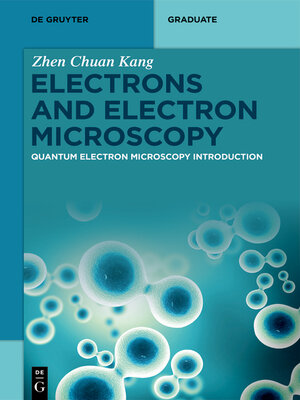Electrons and Electron Microscopy
ebook ∣ Quantum Electron Microscopy Introduction · De Gruyter Textbook
By Zhen Chuan Kang

Sign up to save your library
With an OverDrive account, you can save your favorite libraries for at-a-glance information about availability. Find out more about OverDrive accounts.
Find this title in Libby, the library reading app by OverDrive.



Search for a digital library with this title
Title found at these libraries:
| Library Name | Distance |
|---|---|
| Loading... |
Recent advancements in Transmission Electron Microscopy is built upon the remarkable achievements of the transmission electron microscope, especially, with the aberration corrected object lens, which itself is the incoherent integration of the particle electron optics and modern wave imaging technology.This involves the particle-wave duality of electrons.This book answers questions by applying the de Broglie Hypothesis and Einstein's Theory of Relativity on the relationship between particles and electromagnetic waves to shed some light onto the electron microscopy. The first chapter explains what an electron is, which includes: (a) using the transmission electron microscope to observe the wave-particle duality of electrons, (b) the internal structure of the electron, (c) the electron as a confined electromagnetic vortices field in a corpuscle space. The following chapters, then, decipher the enigmatic relationship between the de Broglie wave of the electron and the internal electromagnetic flux circulatory motion, and analyze the spatiotemporal modification of the traveling electron corpuscle as it passes through the electron gun and magnetic lens. Based on the de Broglie wave of the traveling electron corpuscle at a certain velocity, the author defines the electron microscopy as the technology steering the velocity of the electron corpuscle assemble which encodes the information of periodic spatial grating constructed by the atoms and electromagnetic potential field, which surround the flying electrons. Then the author uses the space-time Talbot effects of the electrons to interpret the high resolution images, which was first developed by Ijima-Cowley, and expounds the contrast of the high resolution electron microscopy images as the intensity distribution of the assemble of corpuscle electron torus pulses train or beam at near field and at its far-field, which is a diffraction pattern. The final chapter of the book elaborates on how to understand the quantum electron microscopy. This book offers a comprehensive understanding what the quantum electron microscopy is, that may bring the microscopy field beyond the atom's spatial periodicity in materials.







